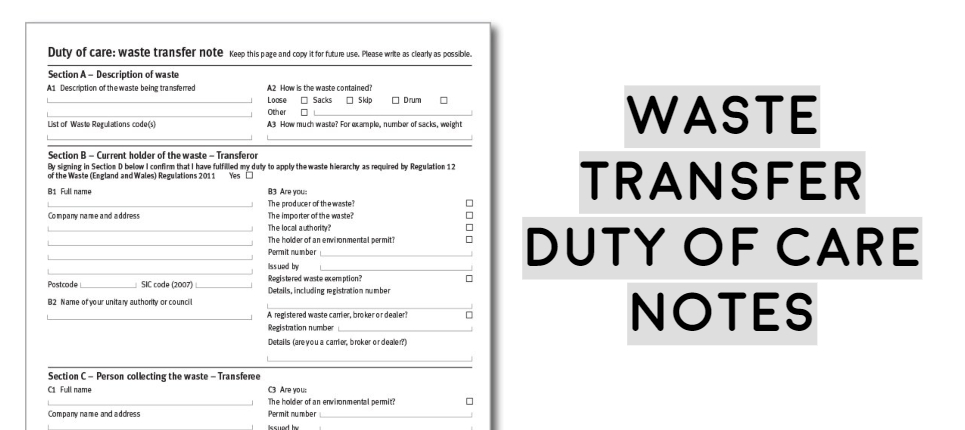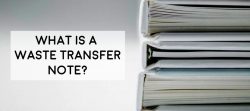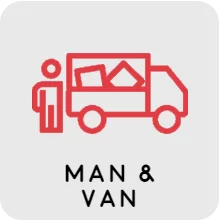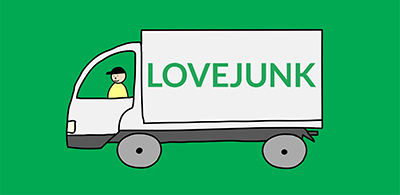Waste transfer duty of care notes
WTN Duty of Care
It continues to surprise me how many organisations fail to comply with one of the basic rules governing waste disposal – the need for a properly completed Waste Transfer Note (WTN).
As well as exposing themselves to considerable risks they are also missing out on opportunities to cut costs and improve their Corporate Social Responsibility.
If you’re an organisation producing waste you have a legal duty of care to ensure that it is disposed of properly. This means only ever using licensed waste carriers to remove waste (running it down the local tip in the company car is a no-no!), and requiring a Waste Transfer Note for each collection. Waste Transfer Notes will vary in design from company to company, but should always contain the following information:
- Description of waste
- How the waste is contained
- Quantity of waste
- Place, date and time of transfer
- Name and address of both parties (yourselves and the carrier)
- Waste carriers license number
- Appropriate European Waste Catalogue (EWC) code/s for your waste
Were an organisation to take the risk, and have an unlicensed carrier clear their waste or were unable to produce a valid Waste Transfer Note and it turns out that the waste is fly-tipped or disposed of improperly, they would be risking criminal prosecution, civil liability and some potentially very negative PR.
However, despite these risks of non-compliance, we regularly attend sales meetings where a prospective client has never received a Waste Transfer Note from their existing waste contractor and often hasn’t even seen that contractors waste carrier’s license. Naturally, being part of a compliant waste company, I’d like to see the authorities do more in terms of prosecuting instances of non-compliance – but, equally, I think much more could be done to raise the awareness of the benefits of compliance.
Over and above avoiding possible fines and civil actions, one of the real benefits of insisting on properly completed Waste Transfer Notes are how they can help identify opportunities to cut costs and improve recycling rates. A Waste Transfer Note provides a wealth of information such as the weight, volume and material mix of the waste, as well as address and date of the collection.
Reviewing Waste Transfer Notes for the year, when matched against waste disposal invoices, allows you to calculate average disposal cost per cubic yard (or per tonne), average collection size and also the frequency of order – all extremely useful information when comparing alternative waste contractors and rate structures. Equally, looking at aggregate material data should highlight whether it makes sense to segregate certain waste streams (eg. Paper, metal, plastics) on-site for separate collection or reuse to reduce disposal costs and increase landfill diversion.
But without Waste Transfer Notes, organisations have little insight into the amount and type of waste they are generating and so will always be at a disadvantage when it comes to reviewing the rates they are charged by their waste contractor or exploring how they might change their operational practices to reduce the amount of waste destined for landfill.
Other useful articles & guides
- regulation and best practise for contractors removing waste from customer sites
- 5 questions to ask your waste contractor
- what is a waste transfer note
- who needs a waste carrier license
- example waste transfer note
Photo by lamentables












